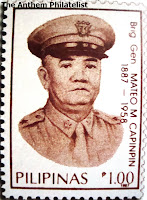National Anthem of Venezuela

Gloria al Bravo Pueblo (Glory to the Brave People) was adopted as Venezuela's national anthem by President Antonio Guzmán Blanco on May 25, 1881. The lyrics were written by the medician and journalist Vicente Salias in 1810. The music was later composed by musician Juan José Landaeta. It is said, however, that the melody was known since 1840 as La Marsellesa Venezolana (Venezuelan Marseillaise), in reference to its subtle similarity to the French national anthem.
Some recent investigations have suggested that the real author of the anthem is Andrés Bello, and not Salias, to whom it was originally credited, and the music composed by another musician called Lino Gallardo. However, this theory is yet to be proven, and lacks any real recognition among the general Venezuelan population, historians, or otherwise.
Juan Jose Landaeta (March 10,1780, Caracas, Venezuela - October 16,1814, Cumana, Venezuela) was a famous composer in Venezuela. He is credited with authorship of the music of the National Anthem of Venezuela, the "Gloria al Bravo Pueblo" (Glory to the Brave Nation) written in 1810, which President Antonio Guzmán Blanco in 1881 decreed the national anthem.
His parents were Juan José Landaeta and Maria Candelaria Arévalo.He studied music with Juan Manuel Olivares in the school of Sojo Father composing many patriotic songs in addition to religious works. He planned the creation of a school for teaching the first letters of brown that was supported by the City Council but is not believed to be realized.
He had sympathy for the cause of independence and eventually joined the revolution. Thus, he was among the plotters of April 19, 1810. This revolutionary passion led him to compose several patriotic songs, including a connection with the installation of the first Congress of Venezuela in 1811. The letter began with "Gloria, Americans." He was pursued and taken prisoner by the royalists in 1813, and with the arrival of Bolívar in Caracas, he emigrated to the East. In 1814 he was captured by Boves in Cumana and shot. It should be noted that what that Landaeta was shot with the score of the anthem stuck to his forehead is nothing more than a legend.
Vicente Salias (March 23, 1776 – September 17, 1814) was a Venezuelan doctor, journalist, and writer who wrote Venezuela's "Gloria al Bravo Pueblo", "Glory to the Brave People." Born in Puerto Cabello, Carabobo on March 23, 1776.
Salias' parents were Francisco Salias Tordesillo and Marīa Margarita Sanija Cabeza de Vaca. He had four siblings and the names were Juan Marino, Carlos Pedro and Francisco Salias who fought for the emancipation movement. All perished during the struggle except Francisco. He enrolled in philosophy courses in the Universidad Central de Venezuela, University of Caracas on September 18, 1788. Three years later he took several courses in Law, which he dropped out a year later.
 Still pursuing much more academic achievement during high school, he enrolled in medicine and his mentor during this time was Felipe Tamariz, who was an important influence in shaping a future scholar. He graduated from high school with a degree in Philosophy and a year later earned another degree in medicine, all of this was before going to college. In that same year, he enrolls as a medical student and begins his illustrious career in medicine.
Still pursuing much more academic achievement during high school, he enrolled in medicine and his mentor during this time was Felipe Tamariz, who was an important influence in shaping a future scholar. He graduated from high school with a degree in Philosophy and a year later earned another degree in medicine, all of this was before going to college. In that same year, he enrolls as a medical student and begins his illustrious career in medicine.His biggest contributions were his articles 1804 and 1805 on Small Pox Vaccination. He was the founder and leader of the Patriotic Society of Caracas (Sociedad Patriotica de Caracas). In charged of the Ministry of Finance, and collaborated with General Francisco de Miranda during the first republic. He was captured by the Spaniards and was transferred to the castle of Puerto Cabello and Valencia, which then was released 1813. Fought along-side Simon Bolivar, Venezuela's liberator, and in the year 1814 he was captured and executed in the Castle of San Felipe.
The two stamps features part of the score of the National anthem. The first was issued in 1982 to Commemorate the Centenary of the Anthem. The second is part of a set of 5 stamps with flags "Venezuela in America" issued in 1972.






